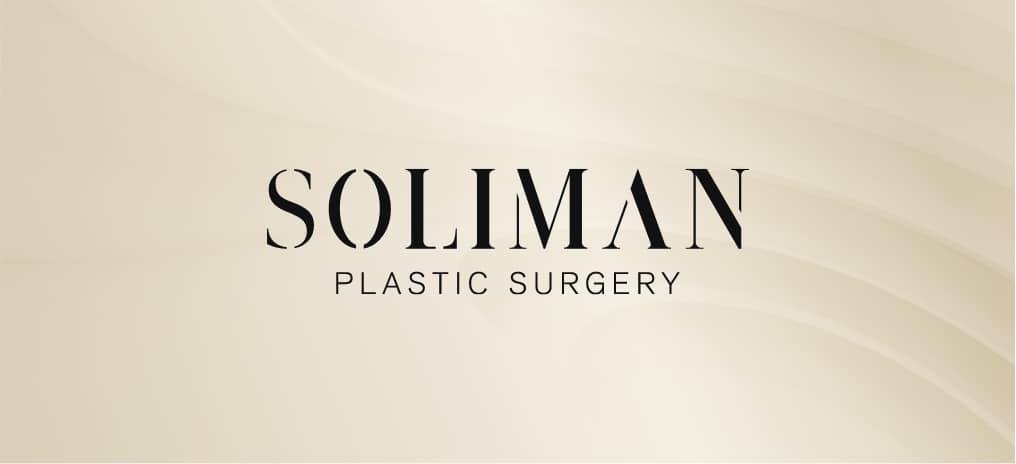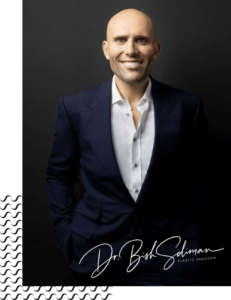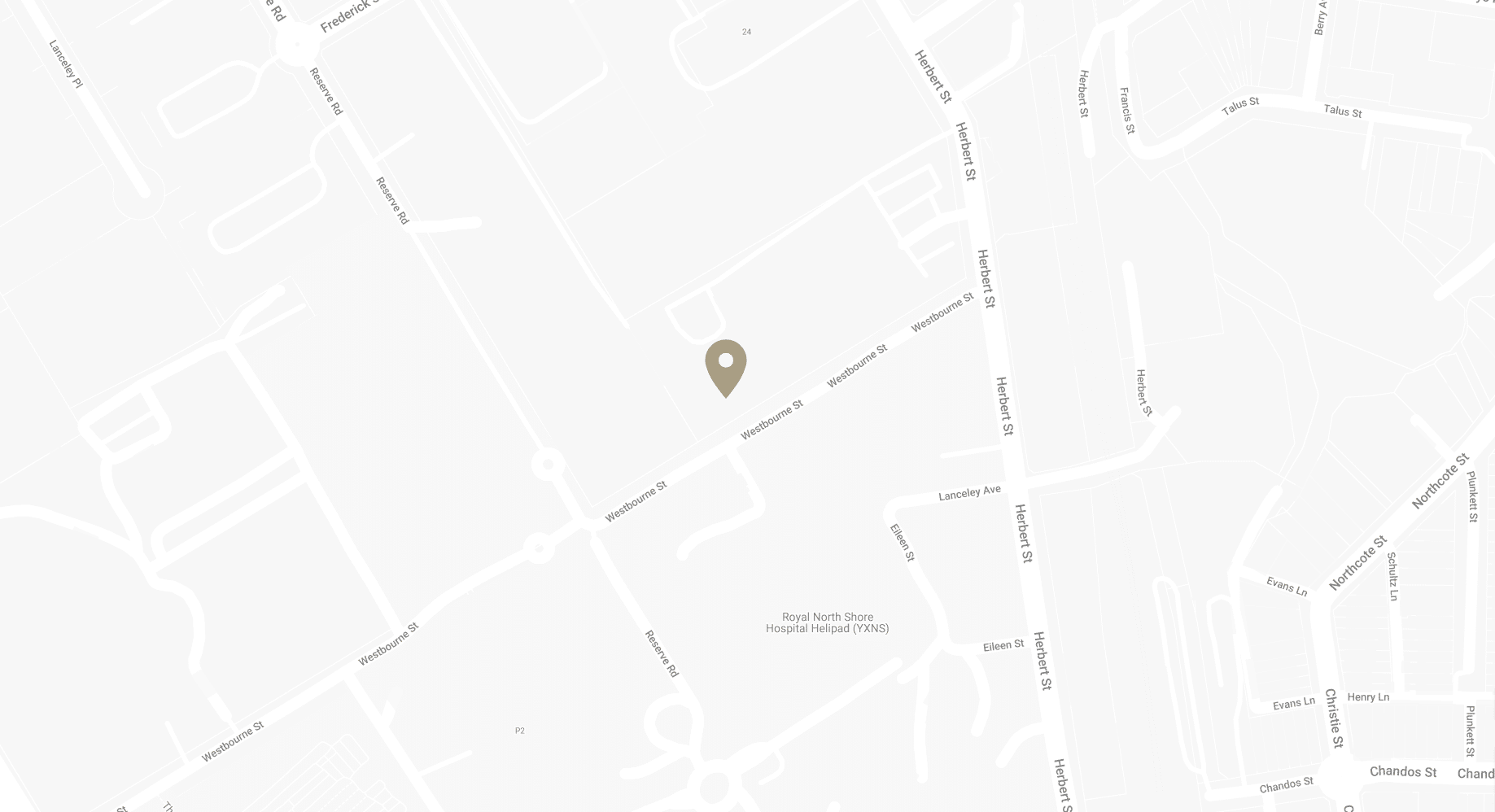Common Eyelid Surgery Mistakes and How to Avoid Them
Blepharoplasty is a delicate procedure that requires a skilled and experienced surgeon. Unfortunately, some common blepharoplasty mistakes can lead to less-than-ideal results.
To help you make an informed decision, Sydney Specialist Plastic Surgeon Dr Bish Soliman will discuss the biggest blepharoplasty mistakes surgeons make with blepharoplasty surgery.
Download Dr Bish Soliman’s Guide to Blepharoplasty Surgery

Mistake #1: Over-Resection of Skin and Fat
Imagine this: you wake up from surgery expecting a refreshed look, only to find your eyes appear hollow and sunken. This unfortunate outcome can occur when the surgeon removes too much skin and fat from the eyelids. Instead of looking rejuvenated, you might appear older and constantly fatigued.
Why does this happen?
The delicate balance of skin, fat, and muscle around the eyes is important for a natural appearance. Some surgeons may adopt a one-size-fits-all approach, removing a predetermined amount of tissue without considering your unique facial anatomy and goals. They might be focused on removing as much excess as possible, aiming for a dramatic change, but this can lead to an unnatural, “overdone” appearance.
Over-resection can also affect the functionality of your eyelids. The eyelids play a crucial role in protecting your eyes, and removing too much tissue can impair their ability to close properly, leading to dryness, irritation, and even vision problems.
What to look for:
Choose a surgeon who prioritises a personalised approach. They should carefully assess your individual needs, taking into account factors like your skin elasticity, underlying muscle tone, and desired outcome. They should understand that the goal of blepharoplasty is not to simply remove tissue but to restore a natural contour to the eyelids.
During your consultation, discuss your desired outcome with your surgeon. Explain that you want to look refreshed, not drastically different. Ask to see before-and-after photos of previous patients, paying close attention to how natural the results appear. Remember, less is often more when it comes to blepharoplasty. A skilled surgeon will err on the side of caution, knowing that it’s easier to remove more tissue in a secondary procedure than to correct the consequences of over-resection.
Mistake #2: Ignoring the Eyebrow Position
Your eyebrows play a role in framing your eyes and influencing your overall facial expression. They contribute to the overall harmony and balance of your face, and their position can significantly impact the outcome of blepharoplasty. Unfortunately, some surgeons overlook the importance of eyebrow position during eyelid surgery, focusing solely on the eyelids themselves.
The problem:
As we age, our skin loses elasticity, and this can affect the position of our eyebrows. Drooping eyebrows can create a heavy, hooded appearance on the upper eyelids, making you look tired, sad, or angry. Failing to address a drooping brow can exacerbate eyelid hooding and create a perpetually tired or angry look, even after eyelid surgery. You might find that the results of your blepharoplasty are less noticeable or that you still look tired, despite having excess skin removed.
The solution:
A skilled surgeon will evaluate your eyebrow position during your initial consultation. They will assess the overall balance of your face and determine if a brow lift is necessary to achieve your desired outcome. A brow lift can reposition the eyebrows, lifting them to a more natural position and smoothing out the forehead. This combined approach can create a more harmonious and balanced rejuvenation of the upper face, addressing both the eyelids and the brow for a natural-looking result.
During your consultation, ask your surgeon about their approach to brow position. Do they routinely assess brow position during blepharoplasty consultations? Are they experienced in performing brow lifts? A surgeon who understands the interplay between the eyebrows and eyelids will be better equipped to deliver the best possible outcome for your unique facial structure.
Mistake #3: Creating a Rounded Eye Shape
Your eyes are unique, and so is their shape. While some cultures favour a rounder eye shape, many Australians prefer a more natural almond shape.
The pitfall:
The shape of your eyes is determined by the position of the canthus, the point where the upper and lower eyelids meet at the outer corner of the eye. Some surgeons, perhaps influenced by trends or personal preferences, may unintentionally create a rounded eye shape by removing too much skin from the outer corners of the eyelids. This can alter your natural eye shape and result in an unnatural or surprised look. You might find that your eyes appear wider or rounder than before, which can significantly alter your overall facial appearance.
The key:
Look for a surgeon who understands and respects your desired aesthetic. During your consultation, discuss your preferences regarding eye shape. Explain that you want to maintain your natural almond shape and avoid a rounded appearance. A skilled surgeon will carefully assess your eye shape and plan the surgery to preserve your natural features while addressing your specific concerns, like excess skin or puffiness. They will understand that the goal is not to change your eye shape.
When reviewing before-and-after photos of previous patients, pay close attention to the shape of their eyes. Do they appear natural and harmonious with their facial features? Choosing a surgeon who has a proven track record of achieving natural-looking results is essential for avoiding unwanted changes to your eye shape.
Mistake #4: Neglecting Lower Eyelid Support
The lower eyelid is a delicate structure that requires adequate support to function correctly and maintain a natural appearance. Neglecting this aspect can lead to complications like eyelid malposition, where the eyelid turns outward (ectropion) or inward (entropion).
The issue:
Some surgeons may focus solely on removing excess skin and fat from the lower eyelids without addressing underlying muscle laxity or inadequate support. This can compromise the eyelid’s ability to close properly and lead to an unnatural appearance. The lower eyelid might appear loose or droopy, and you might experience dryness, irritation, or even difficulty blinking.
The solution:
A skilled surgeon will assess the structural integrity of your lower eyelids during your consultation. They will check for muscle laxity and determine if additional support is needed. Techniques like canthoplasty or canthopexy can reinforce eyelid support and prevent post-operative complications. Canthoplasty involves tightening the lower eyelid muscle, while canthopexy involves anchoring the lower eyelid to the bone, providing additional support and preventing it from drooping.
During your consultation, ask your surgeon about their approach to lower eyelid support. Do they routinely assess for muscle laxity? Are they experienced in performing canthoplasty or canthopexy? A surgeon who understands the importance of lower eyelid support will be better equipped to deliver a safe and effective outcome, ensuring proper eyelid function.
Mistake #5: Poor Scar Management
Scars are an inevitable part of any surgery, but their appearance can vary greatly depending on the surgeon’s technique and your individual healing process. While some scarring is unavoidable, noticeable or unsightly scars can detract from the overall result of your blepharoplasty.
The challenge:
Some surgeons may not prioritise meticulous suturing techniques or provide adequate post-operative care instructions, leading to noticeable or unsightly scars. They might rush through the suturing process, use thick sutures that leave prominent marks, or fail to adequately educate patients on proper wound care.
The answer:
Choose a surgeon who emphasises meticulous surgical technique and provides comprehensive post-operative care instructions. They should use fine sutures, place incisions in inconspicuous locations, and carefully close the wounds to minimise scarring. They should also provide detailed instructions on wound care, including how to clean the incisions, apply ointment, and protect the area from sun exposure.
Furthermore, they may also recommend scar management therapies like silicone gel sheeting or laser treatments to minimise scarring and promote optimal healing. Silicone gel sheeting helps to hydrate and soften the scar tissue, while laser treatments can target redness and pigmentation, improving the overall appearance of the scar.
During your consultation, ask your surgeon about their approach to scar management. Do they prioritise meticulous suturing techniques? What post-operative care instructions do they provide? Do they offer any additional scar management therapies? A surgeon who understands the importance of minimising scarring will be committed to delivering the best possible aesthetic outcome for your blepharoplasty.
Choosing the Right Surgeon for Your Blepharoplasty Surgery
Achieving optimal results with blepharoplasty requires careful planning and the expertise of a skilled and experienced surgeon.
Here’s what to look for:
- Board-certified plastic surgeon: Ensure your surgeon is board-certified by the Australian Society of Plastic Surgeons (ASPS) or the Royal Australasian College of Surgeons (RACS). This certification signifies their specialised training and expertise in plastic surgery.
- Extensive experience in blepharoplasty: Choose a surgeon with a proven track record of successful blepharoplasty procedures. Don’t hesitate to ask about their experience and view before-and-after photos of previous patients.
- Personalised approach: Your surgeon should prioritise a personalised approach, taking the time to understand your individual needs and aesthetic goals. They should develop a customised surgical plan tailored to your unique facial anatomy and desired outcome.
- Open communication: Choose a surgeon who fosters open communication and encourages you to ask questions
FAQs about Mistakes Surgeons Make with Blepharoplasty Surgery
What is the difference between upper and lower blepharoplasty?
- Upper blepharoplasty addresses excess skin and fat on the upper eyelids, often improving a tired or hooded appearance. Lower blepharoplasty focuses on the lower eyelids, addressing puffiness, bags under the eyes, and wrinkles. While some patients opt for both, the procedures can be performed individually depending on your needs.
Can blepharoplasty correct dark circles under my eyes?
- Blepharoplasty primarily addresses excess skin and fat. While removing puffy bags can reduce the appearance of dark circles, it won’t eliminate them entirely. Dark circles are often caused by pigmentation, thin skin, or blood vessels showing through. Other treatments like dermal fillers or laser therapy might be more effective for addressing pigmentation concerns.
Will blepharoplasty change my vision?
- Blepharoplasty itself doesn’t directly impact vision. However, in rare cases, swelling after surgery can temporarily affect your eyesight. This usually subsides as you heal. It’s important to choose a qualified surgeon who understands the anatomy of the eye area to minimise risks.
How long does it take to recover from blepharoplasty?
- Most patients experience some swelling and bruising for 1-2 weeks after surgery. You can usually return to work within 7-10 days, but strenuous activities should be avoided for several weeks. Full recovery, including scar maturation, can take several months.
What are the alternatives to blepharoplasty?
- Non-surgical options like muscle relaxant injections, dermal fillers, and laser treatments can address some signs of ageing around the eyes. These options offer temporary results and might be suitable for those not ready for surgery. However, they might not provide the same dramatic or long-lasting results as blepharoplasty.
Is blepharoplasty covered by Medicare?
- Medicare coverage for blepharoplasty depends on whether the procedure is deemed medically necessary. If your vision is impaired by drooping eyelids, Medicare might cover a portion of the surgery. However, purely cosmetic blepharoplasty is generally not covered by Medicare.
Can I combine blepharoplasty with other facial procedures?
- Yes, blepharoplasty can be safely combined with other facial procedures like facelifts, brow lifts, or skin resurfacing treatments.
Further Reading about Blepharoplasty with Sydney Specialist Plastic Surgeon Dr Bish Soliman
- Read Dr Bish Soliman’s Blog about Causes of Ageing Eyes – Losing Vision with Drooping Eyelids
- Read Dr Bish Soliman’s Blog about Complications of Blepharoplasty and How to Avoid Them
- Read Dr Bish Soliman’s Blog about Will Medicare Cover My Eyelid Surgery
- Read Dr Bish Soliman’s Blog about FAQs about Upper Blepharoplasty Surgery (Upper Eyelids)
- Read Dr Bish Soliman’s Blog about Tips to Reduce Swelling and Bruising After Eyelid Surgery
- Read Dr Bish Soliman’s Blog about Recovery after Eyelid Surgery
Medical References about Blepharoplasty Surgery
- Management of Cosmetic Eyelid Surgery Complications
- Complications of Blepharoplasty: Prevention and Management
- Complications in periocular rejuvenation
- Dry eye symptoms and chemosis following blepharoplasty: a 10-year retrospective review of 892 cases in a single-surgeon series
- Minor complications after blepharoplasty: dry eyes, chemosis, granulomas, ptosis, and scleral show



